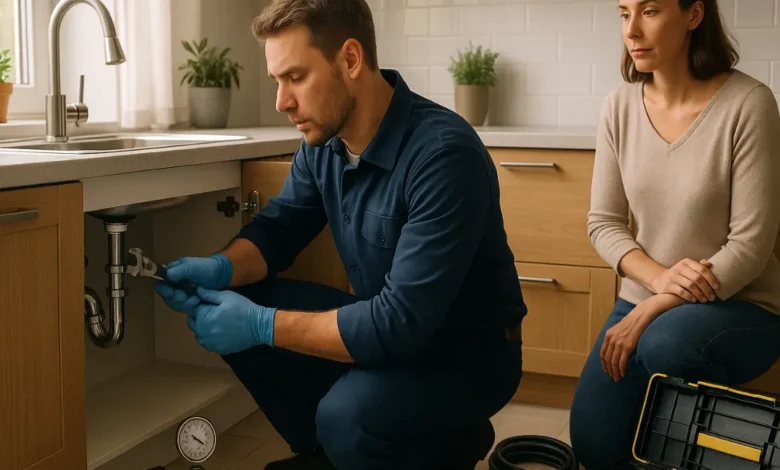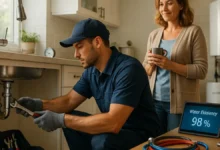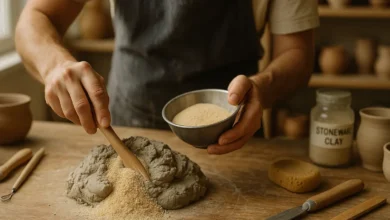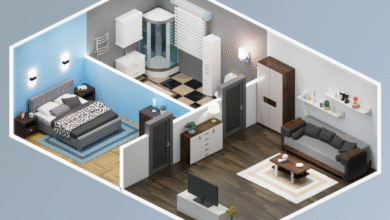How to Improve the Efficiency of Your Plumbing System?

A plumbing system is one of the most essential parts of any home, responsible for managing water supply and waste disposal efficiently. When the system works smoothly, it provides comfort, convenience, and cleanliness every day. However, inefficiencies such as leaks, poor insulation, or outdated fixtures can cause unnecessary water waste and increased utility costs. Improving plumbing efficiency not only saves money but also conserves valuable resources, reducing environmental impact. Homeowners who take time to assess their plumbing systems and make practical upgrades often experience a noticeable difference in water pressure, energy savings, and overall performance. A few thoughtful changes can make a significant difference in how effectively the system operates.
Understanding How Plumbing Efficiency Works
Plumbing efficiency depends on the smooth coordination between water flow, pressure, and temperature regulation. Every pipe, valve, and fixture plays a role in ensuring water moves efficiently throughout the home. Problems such as corrosion, mineral buildup, and minor leaks can gradually reduce performance without immediate warning. A well-designed system prevents water loss and maintains consistent pressure, minimizing strain on the water heater and pump. Regular inspections help identify weak points early and maintain the system’s integrity. Simple habits like turning off taps tightly or cleaning aerators can prevent long-term issues. By keeping the system balanced and clean, homeowners ensure steady water delivery with reduced energy consumption, leading to both environmental and financial benefits.
The Role of Maintenance and Timely Repairs
Regular maintenance is the foundation of an efficient plumbing system. Pipes, joints, and fittings are constantly exposed to varying pressure and temperature, causing gradual wear. Over time, even a small leak can waste hundreds of gallons of water. Conducting routine checks and scheduling professional assessments keeps the system operating smoothly. Technicians can identify developing issues before they escalate into major problems. Proper maintenance also extends the life of water heaters and filtration systems, ensuring consistent water quality and flow. For homeowners looking for dependable service, Trust 1 Services Plumbing, Heating, and Air Conditioning offers comprehensive maintenance solutions that help preserve system efficiency. Taking preventive action rather than waiting for a breakdown can significantly reduce both repair costs and water consumption, maintaining long-term performance and peace of mind.
Upgrading Fixtures and Appliances for Better Performance
Outdated fixtures are one of the most common causes of water inefficiency in homes. Older faucets, showerheads, and toilets often consume more water than modern, low-flow alternatives. Replacing them with water-saving models can drastically cut down on daily usage without compromising comfort. Similarly, upgrading to energy-efficient dishwashers and washing machines can reduce the strain on both the water supply and drainage systems. Even minor updates like installing faucet aerators or dual-flush toilets can have a significant cumulative effect. Homeowners who combine fixture upgrades with routine maintenance benefit from improved pressure balance and smoother flow. Modern plumbing fixtures are designed to use water more intelligently, directing flow precisely where needed. These improvements not only save money but also contribute to sustainability by reducing unnecessary waste and prolonging the lifespan of the entire plumbing network.
Water Heating Efficiency and Insulation
Heating water is one of the most significant energy expenses in most households, making water heater efficiency a key factor in overall plumbing performance. Over time, sediment buildup at the bottom of the tank can reduce heating capacity and increase energy consumption. Flushing the tank periodically prevents this problem and ensures a consistent hot water supply. Insulating both the tank and surrounding pipes helps maintain temperature for more extended periods, reducing the energy required for reheating. For those using older water heaters, upgrading to a tankless or high-efficiency unit can offer substantial long-term savings. Proper insulation also prevents heat loss in colder months, ensuring stable performance regardless of the weather. These adjustments, though small, collectively improve the energy profile of the plumbing system while keeping water readily available at optimal temperatures for daily use.
Identifying and Fixing Hidden Leaks
Hidden leaks can be some of the most damaging and costly plumbing issues because they often go unnoticed until significant damage occurs. Leaks inside walls, under floors, or around joints can waste water continuously while weakening the structure of the home. Regularly checking for damp spots, unexpected mold growth, or unexplained spikes in water bills can help identify such problems early. Once detected, immediate repair is essential to prevent escalation. Using smart leak detectors or water monitoring systems provides an extra layer of protection by alerting homeowners at the first sign of irregular usage. Fixing leaks promptly not only saves water but also prevents damage to floors, walls, and insulation. Consistent vigilance ensures the plumbing system remains secure, efficient, and free of hidden risks that can silently increase utility costs and compromise safety.
The Importance of Water Pressure Regulation
Maintaining proper water pressure is essential for efficiency and system longevity. Excessive pressure can strain pipes, joints, and appliances, while low pressure leads to inconvenience and poor performance. Installing a pressure regulator ensures that water flows at an optimal rate without overburdening the infrastructure. Regularly checking for pressure imbalances can also prevent leaks and premature wear in fixtures. Over time, sediment buildup or valve obstruction may affect pressure consistency. Cleaning and flushing the system periodically restores balance and ensures smooth operation. Balanced pressure not only improves functionality but also reduces noise and vibration throughout the plumbing network. When managed correctly, pressure control enhances the reliability and efficiency of the system, ensuring water flows freely without unnecessary stress on its components.
Sustainable Water Practices at Home
Adopting water-conscious habits complements technical upgrades in improving efficiency. Simple behavioral changes, such as turning off the tap while brushing teeth or running full loads in the dishwasher, can yield noticeable savings. Collecting rainwater for outdoor use and fixing dripping faucets immediately are practical conservation steps. Efficient irrigation systems with moisture sensors also prevent overwatering. Sustainability is not just about saving water but using it wisely to meet daily needs while minimizing waste. Educating household members about conservation encourages long-term awareness and responsibility. When combined with mechanical improvements and timely repairs, sustainable habits transform a standard plumbing system into an eco-efficient one that serves both the home and environment effectively.
Improving the efficiency of your plumbing system requires a mix of proper maintenance, modern upgrades, and responsible usage. A well-maintained system not only ensures reliable water flow but also reduces energy consumption and prevents costly repairs. From timely leak detection and pressure regulation to upgrading fixtures and insulating pipes, each step contributes to smoother performance and long-term savings. Efficient plumbing is a reflection of both sound design and consistent care. By taking proactive measures today, homeowners can enjoy a reliable, cost-effective, and environmentally friendly water system for years to come. The result is a healthier home, lower bills, and a positive impact on the planet through sustainable water management.





